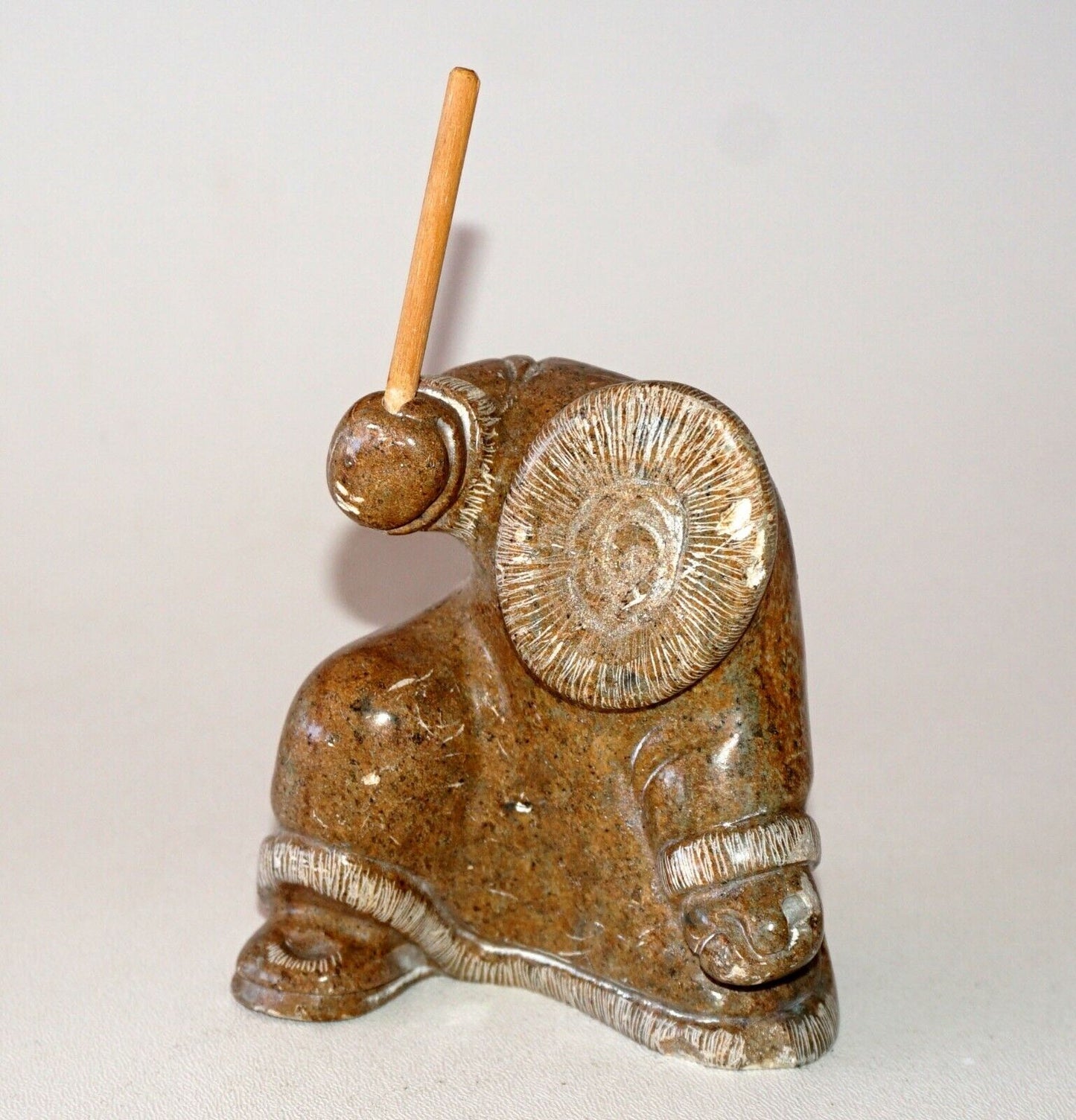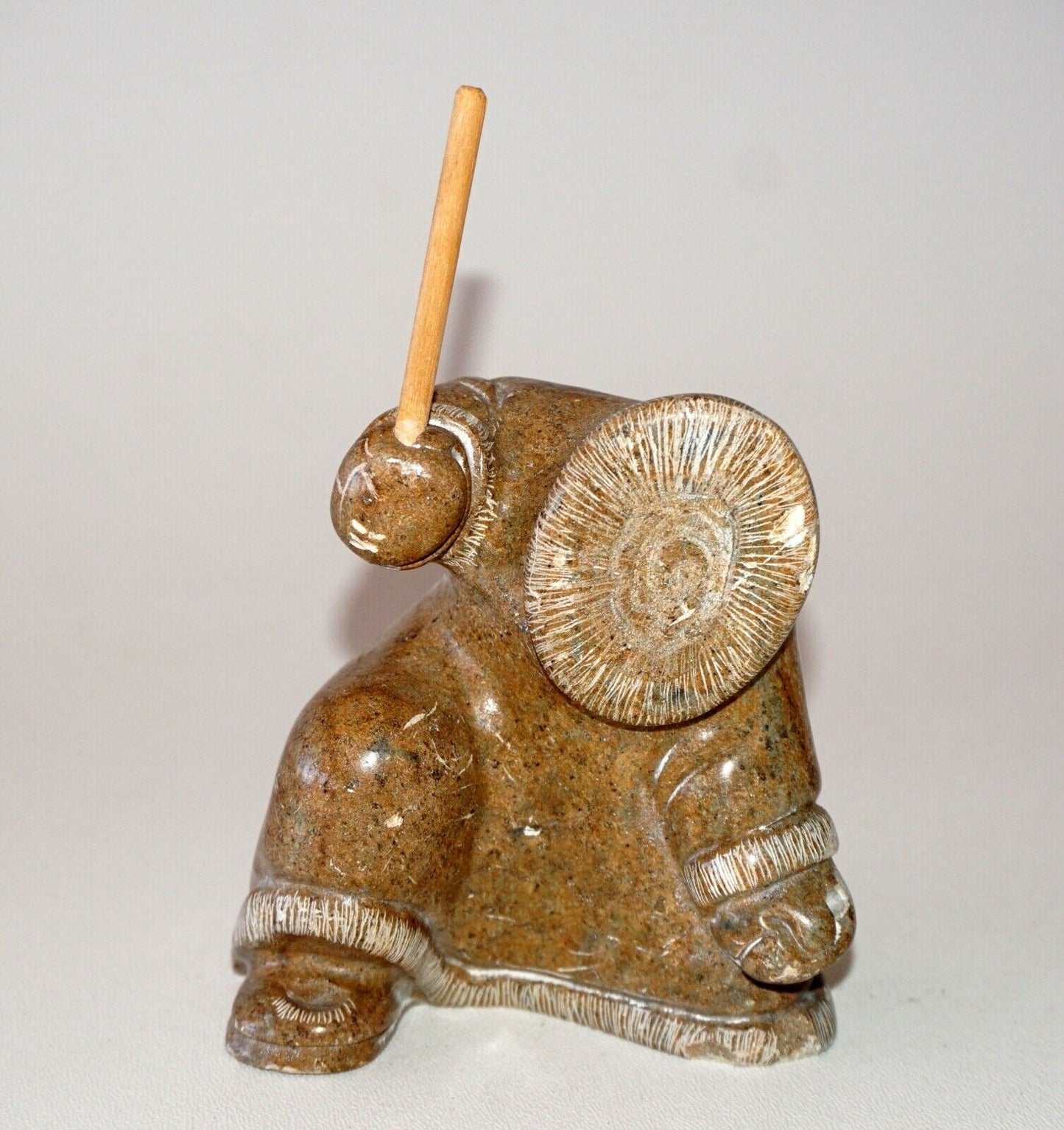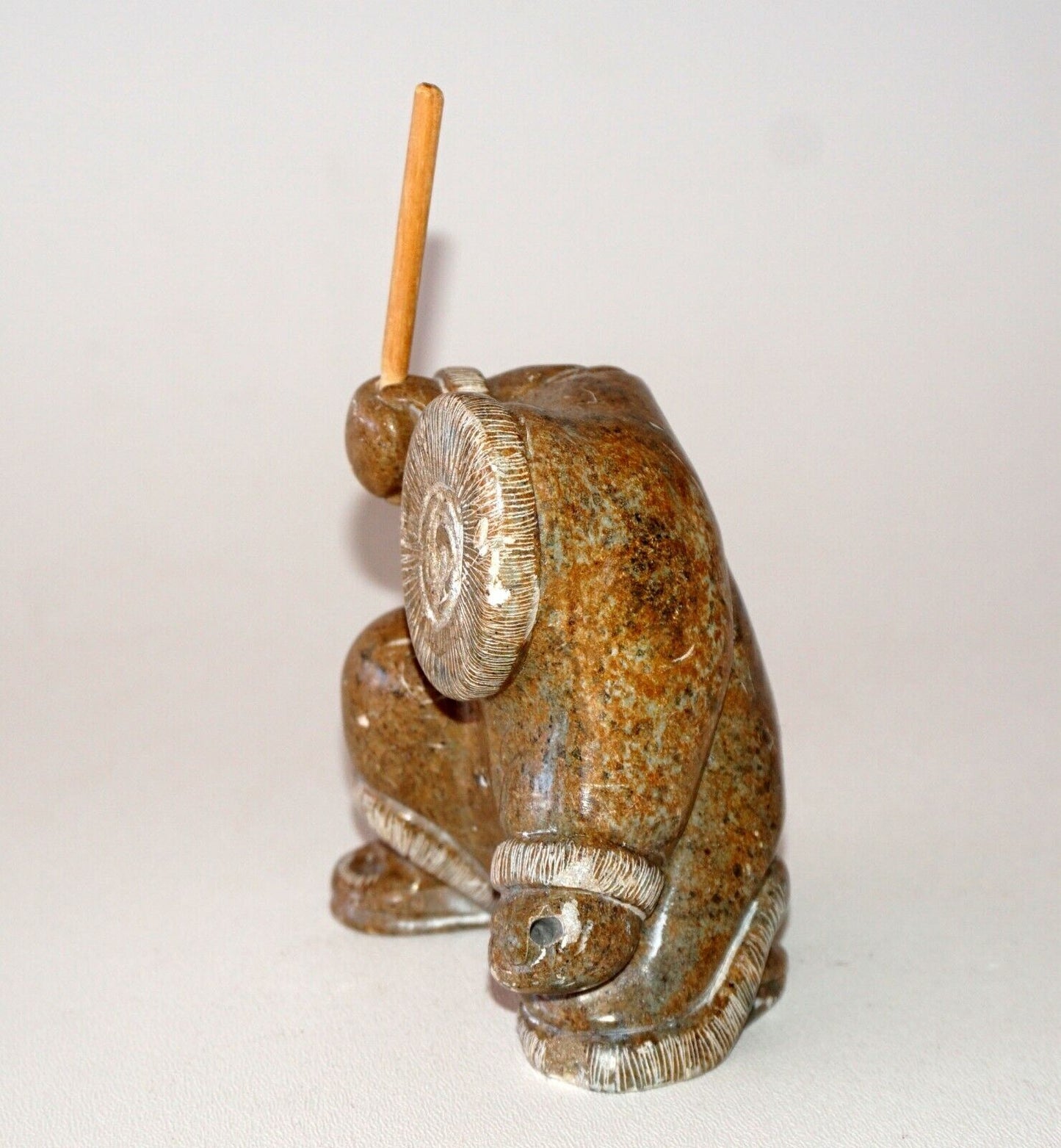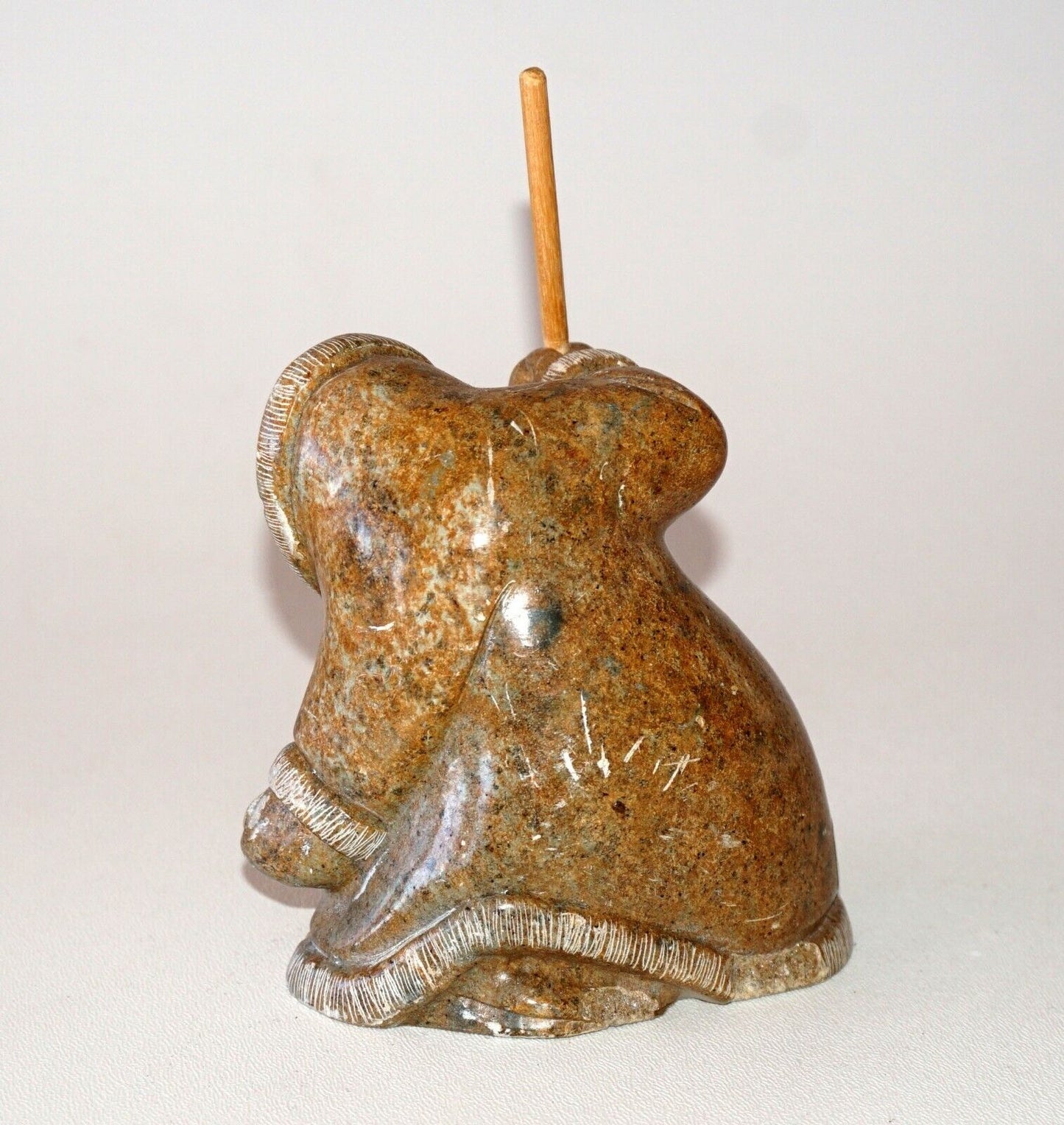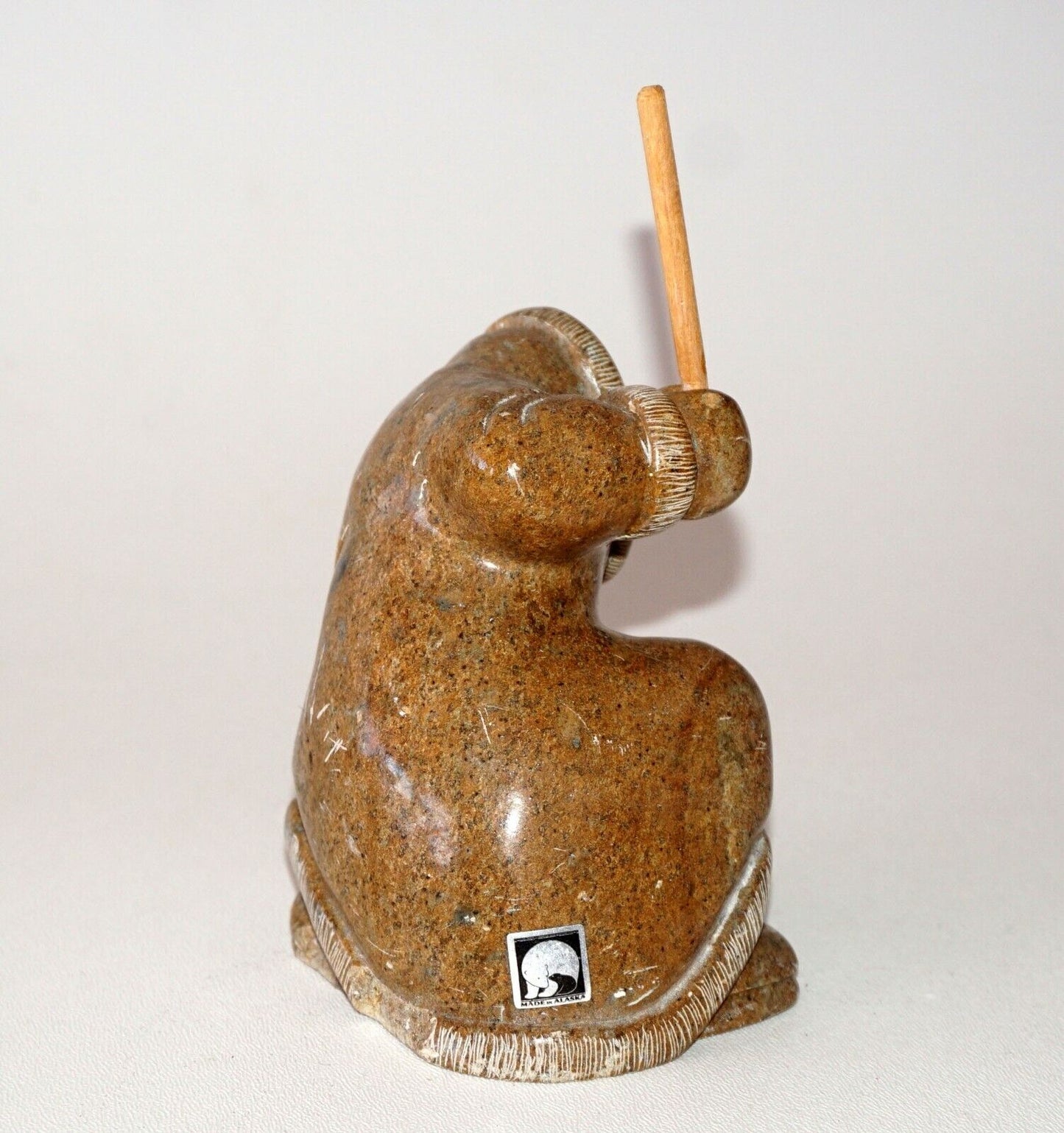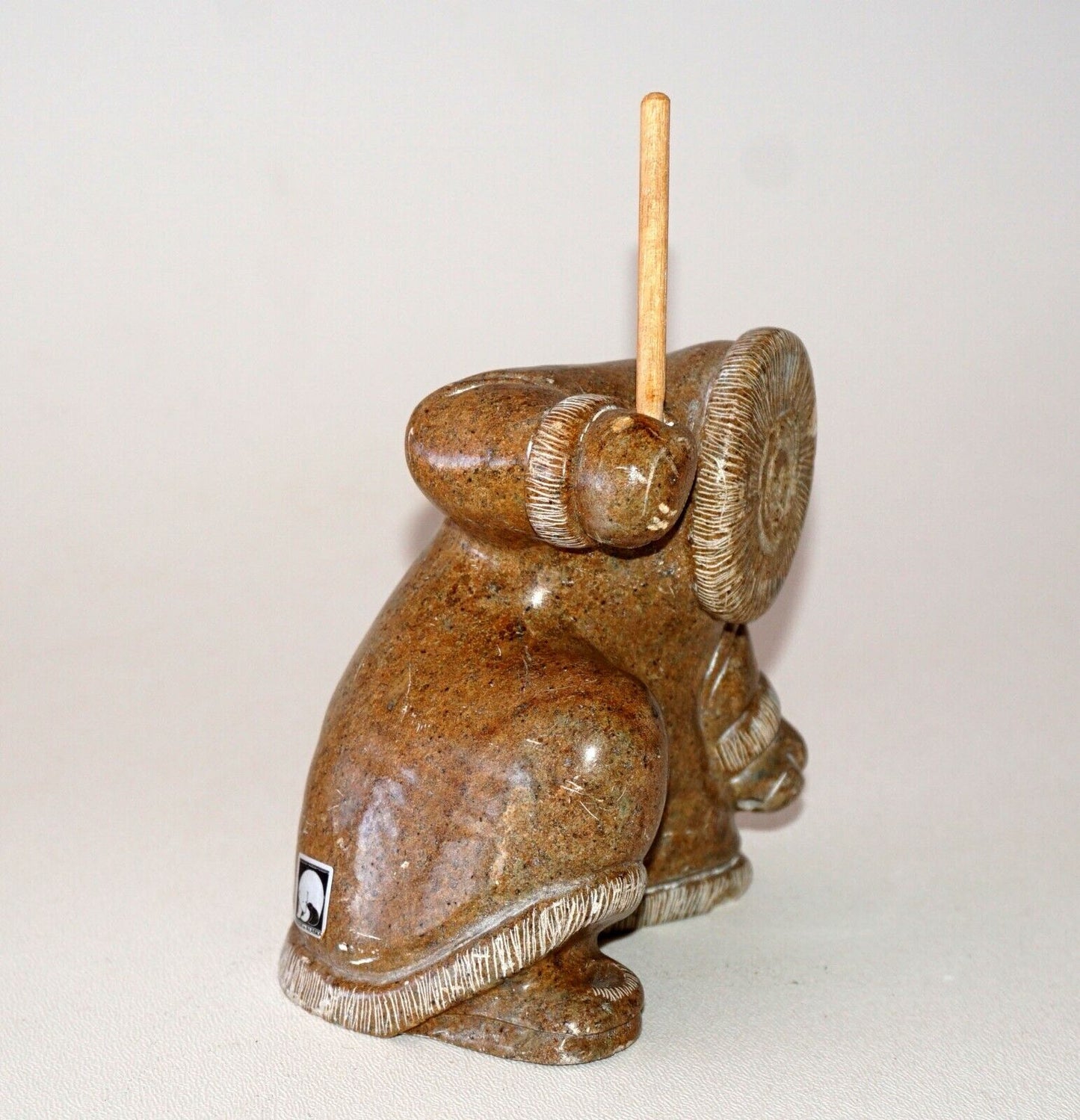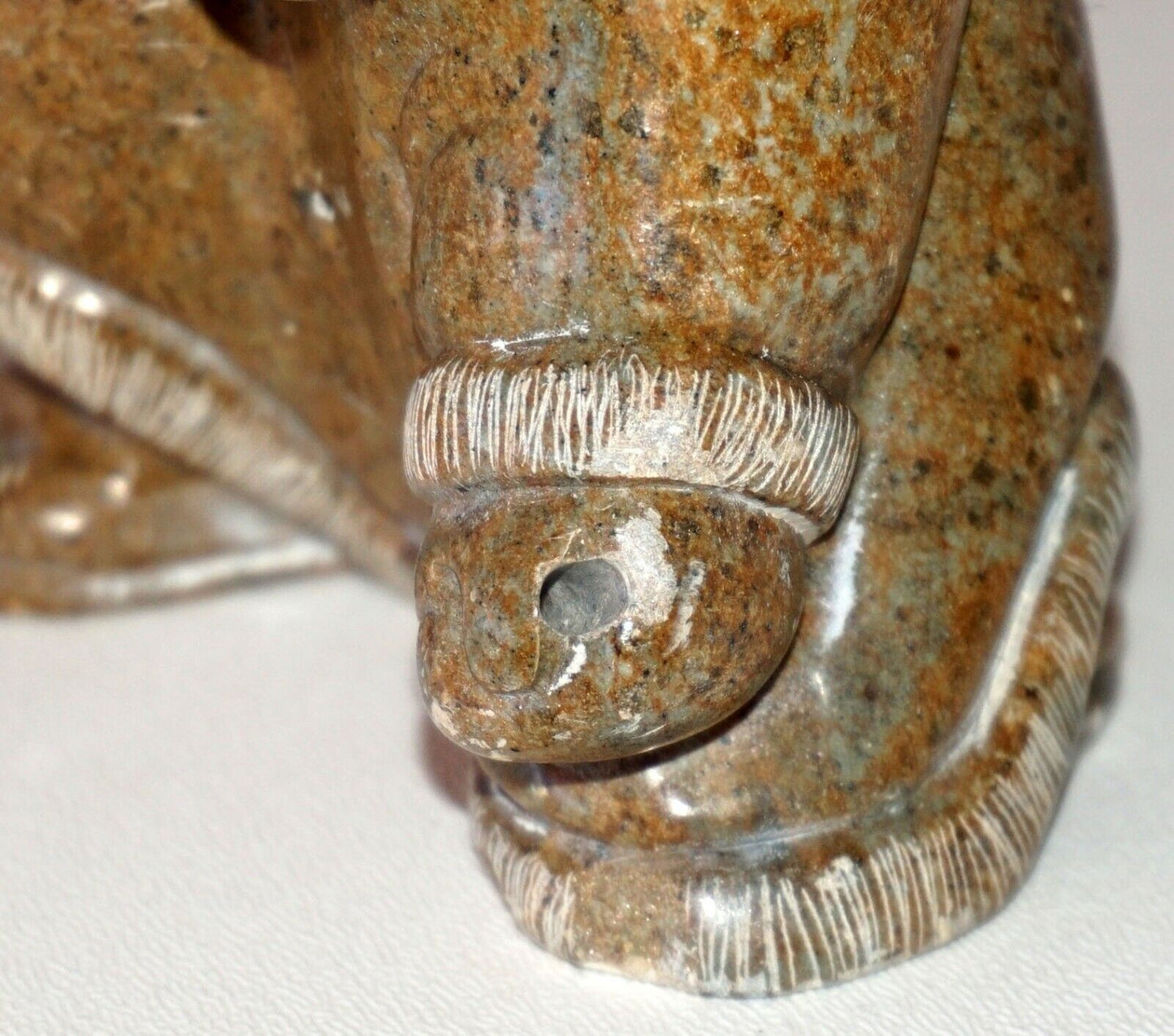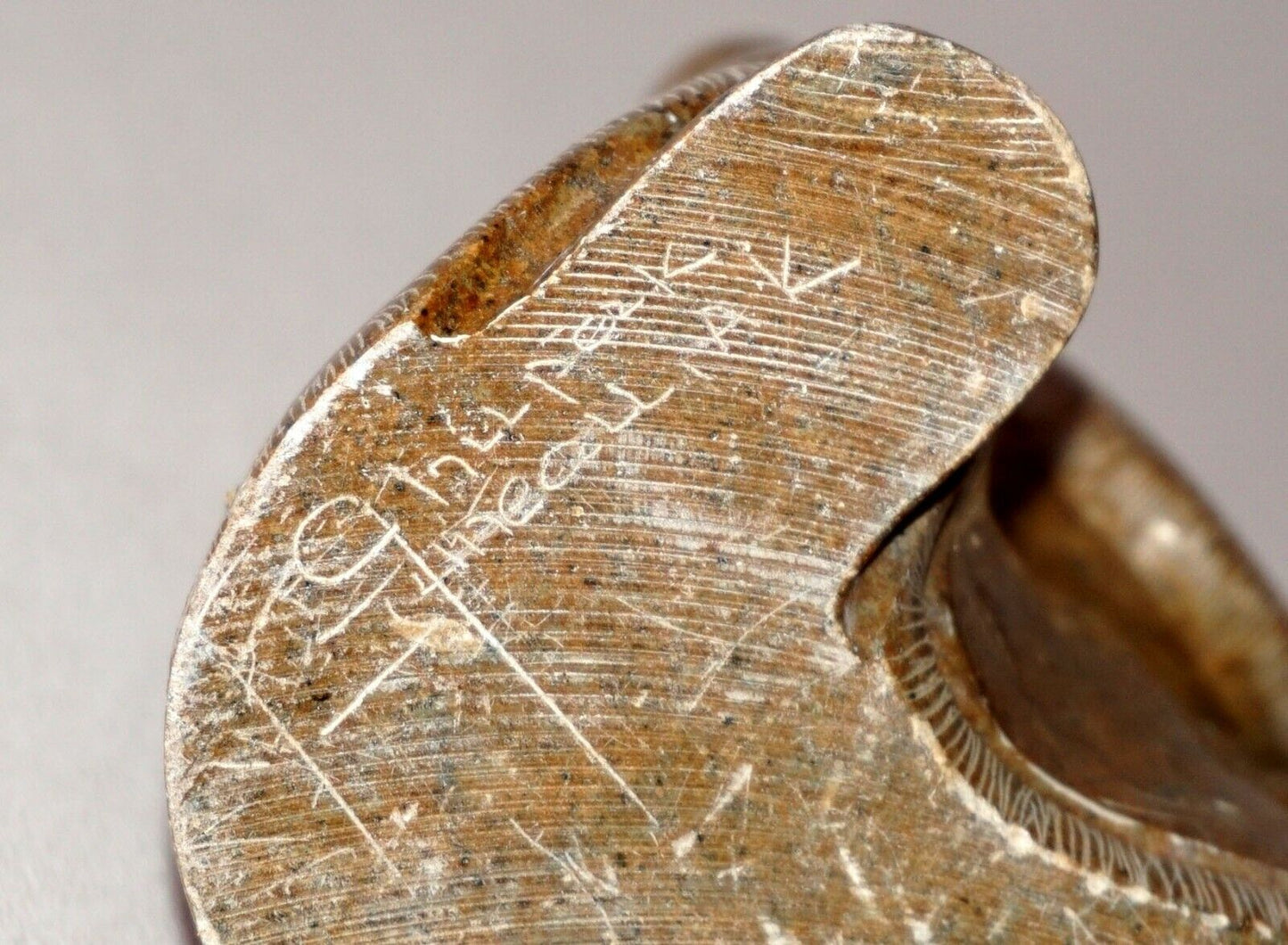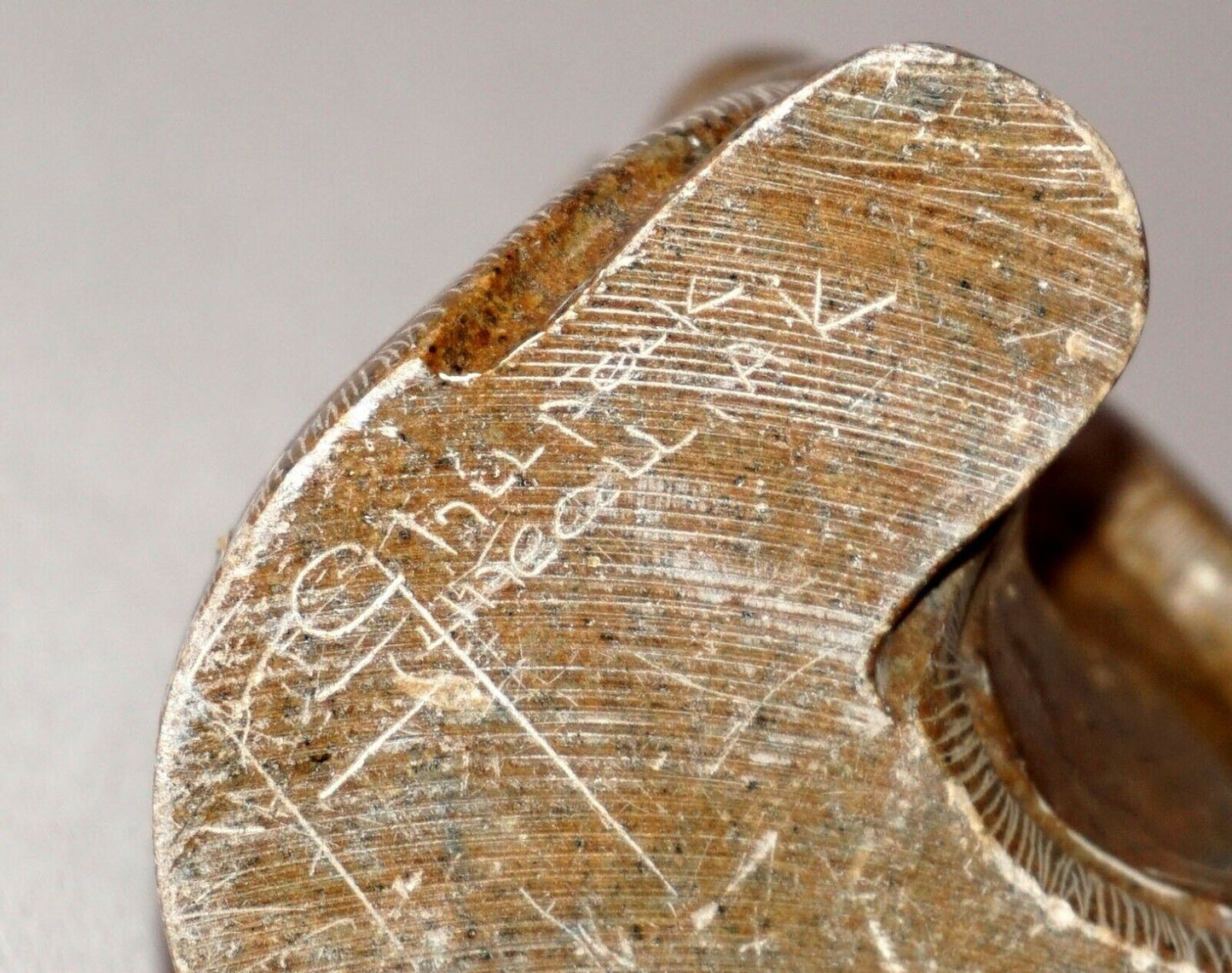1
/
of
9
Harnisch and Company
1970s Inuit Juneau Alaska Eskimo Hunter Stone Sculpture by Chivly Chupak (Kor)
1970s Inuit Juneau Alaska Eskimo Hunter Stone Sculpture by Chivly Chupak (Kor)
Regular price
$329.00 USD
Regular price
$0.00 USD
Sale price
$329.00 USD
Unit price
/
per
Couldn't load pickup availability
Share
Aloha,
Up for sale from a local estate in Honolulu Hawaii this 1970s US Inuit stone carving that is depiction a Eskimo hunter that is holding a carved club and is somewhat illegibly signed by the artist Chivly Chupak. Additionally there is a tag that reads made in Alaska. The condition is described above for more information please check the photos. If you know the artist please contact us we would love to complete the listing.
Measurements:
6 inches x 4 inches x 2.5lb
More about the artist:
Chupak, a sensitive and creative Alaskan artist, signs his work "Chup AK" which is a derivative of his name combined with the name of his home, Alaska.
Chupak experienced a long, dangerous and tragic journey from his childhood homeland of Cambodia to his home now in Juneau, Alaska. He was seven when the Khmer Rouge marched into Phnom Pehn, uprooted his family of 9 and forced them to labor in the fields and jungles. Food was severely rationed by the communist regime and there was never enough to go around. At the age of twelve, Chupak was an orphan, his parents and 4 siblings having perished of starvation. His remaining family knew their only hope was a desperate escape to Thailand, on foot, hiding from the communists who would have killed them instantly if caught.
Exhausted, but seemingly safe at the border of Thailand, their dream of freedom was short lived when they were interred in a refugee camp. Conditions were meager, and Chupak had nothing but time on his hands, as there was no school. Now almost fourteen, he turned to carving to occupy his time and his mind, using any material he could scavenge in the camp, sometimes wood, sometimes stone or precious ivory. He also sold the finished works to passing visitors, providing money to supplement the family food ration.
During this time of ponderous waiting and hoping, he encountered a striking picture from Alaska. He was captured by the beauty of these people and absolutely fascinated that the Eskimos looked very much like his own people. The difference, however, was that these people were bundled in furs for protection against the cold, frozen land. He had never seen snow and marveled at what it must be like to live in such an alien place. The thought of traveling to Alaska, a place so unlike the life he had to endure, gave Chupak a desire that kept his hope alive. He promised himself that he would one day see Alaska.
After two years of waiting in the camp, his family received sponsorship from an American family. His surviving brother and sister were thankful beyond words that a new life lay just ahead of them. At age 17, Chupak finally settled in Seattle where he attended Edmonds High School. He continued to refine his carving style and could at long last begin to satisfy his thirst for more information about Eskimo peoples and Alaska. He studied the history of the Native peoples, their culture, village life and their art. His sculptures began to reflect the wildlife, landscapes and spirit of Alaska. When he was 20 years old, he realized his life-sustaining ambition and visited Alaska, traveling around the state, absorbing the incredible beauty and vast freedom of the Great Land.
The experience moved this sensitive man as nothing yet in his life had. Chupak's creative spirit had at last found a home with subjects big enough to express his joy at being alive.
After a time, Chupak took his family to remote Emmonak, Alaska near the Bering Sea where he taught carving and current production techniques to villagers. He smiles and proudly points to the photographs of himself bundled up in parkas and furs fishing in the sub zero weather. His dream has come true.
Chupak, his wife Sorn and little daughter Junie, now prosper in Juneau where Chupak Carving Arts has developed a state of the art studio in which Chupak can work and continue to teach carving, passing on his love for this exacting art form to his extended family.
The word "home" has special meaning for Chupak, as he has come to love his adopted land, Alaska, having endured so much to enjoy the freedom of the Great Land - freedom to create in a supportive, dynamic environment
View full details
Up for sale from a local estate in Honolulu Hawaii this 1970s US Inuit stone carving that is depiction a Eskimo hunter that is holding a carved club and is somewhat illegibly signed by the artist Chivly Chupak. Additionally there is a tag that reads made in Alaska. The condition is described above for more information please check the photos. If you know the artist please contact us we would love to complete the listing.
Measurements:
6 inches x 4 inches x 2.5lb
More about the artist:
Chupak, a sensitive and creative Alaskan artist, signs his work "Chup AK" which is a derivative of his name combined with the name of his home, Alaska.
Chupak experienced a long, dangerous and tragic journey from his childhood homeland of Cambodia to his home now in Juneau, Alaska. He was seven when the Khmer Rouge marched into Phnom Pehn, uprooted his family of 9 and forced them to labor in the fields and jungles. Food was severely rationed by the communist regime and there was never enough to go around. At the age of twelve, Chupak was an orphan, his parents and 4 siblings having perished of starvation. His remaining family knew their only hope was a desperate escape to Thailand, on foot, hiding from the communists who would have killed them instantly if caught.
Exhausted, but seemingly safe at the border of Thailand, their dream of freedom was short lived when they were interred in a refugee camp. Conditions were meager, and Chupak had nothing but time on his hands, as there was no school. Now almost fourteen, he turned to carving to occupy his time and his mind, using any material he could scavenge in the camp, sometimes wood, sometimes stone or precious ivory. He also sold the finished works to passing visitors, providing money to supplement the family food ration.
During this time of ponderous waiting and hoping, he encountered a striking picture from Alaska. He was captured by the beauty of these people and absolutely fascinated that the Eskimos looked very much like his own people. The difference, however, was that these people were bundled in furs for protection against the cold, frozen land. He had never seen snow and marveled at what it must be like to live in such an alien place. The thought of traveling to Alaska, a place so unlike the life he had to endure, gave Chupak a desire that kept his hope alive. He promised himself that he would one day see Alaska.
After two years of waiting in the camp, his family received sponsorship from an American family. His surviving brother and sister were thankful beyond words that a new life lay just ahead of them. At age 17, Chupak finally settled in Seattle where he attended Edmonds High School. He continued to refine his carving style and could at long last begin to satisfy his thirst for more information about Eskimo peoples and Alaska. He studied the history of the Native peoples, their culture, village life and their art. His sculptures began to reflect the wildlife, landscapes and spirit of Alaska. When he was 20 years old, he realized his life-sustaining ambition and visited Alaska, traveling around the state, absorbing the incredible beauty and vast freedom of the Great Land.
The experience moved this sensitive man as nothing yet in his life had. Chupak's creative spirit had at last found a home with subjects big enough to express his joy at being alive.
After a time, Chupak took his family to remote Emmonak, Alaska near the Bering Sea where he taught carving and current production techniques to villagers. He smiles and proudly points to the photographs of himself bundled up in parkas and furs fishing in the sub zero weather. His dream has come true.
Chupak, his wife Sorn and little daughter Junie, now prosper in Juneau where Chupak Carving Arts has developed a state of the art studio in which Chupak can work and continue to teach carving, passing on his love for this exacting art form to his extended family.
The word "home" has special meaning for Chupak, as he has come to love his adopted land, Alaska, having endured so much to enjoy the freedom of the Great Land - freedom to create in a supportive, dynamic environment
